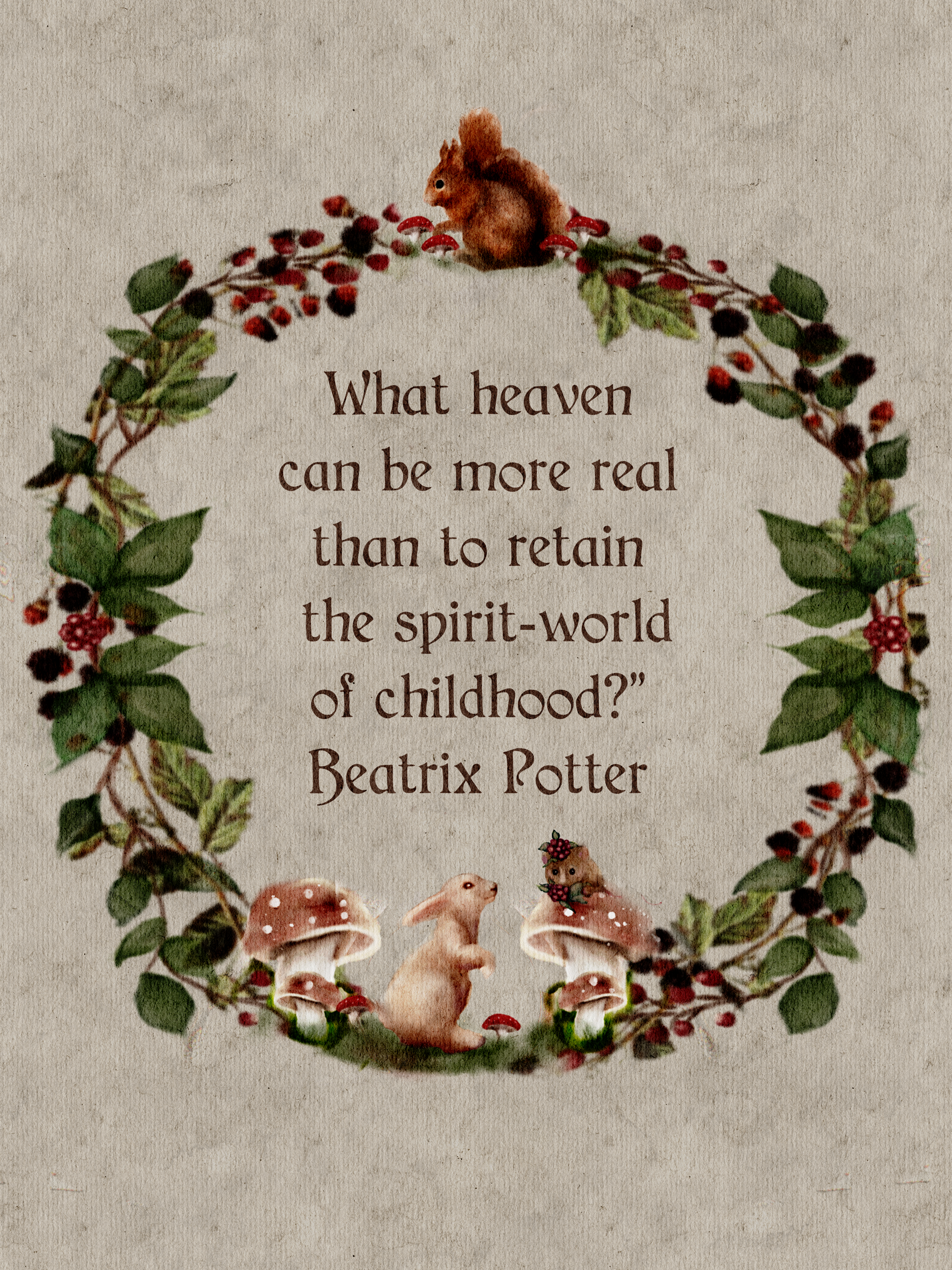Beatrix Potter Children's Book Author, Scientist, and Farmer A Ten Minute Children's History Podcast
Fear prevents us from reaching our true potential. listen to our guests as they share how they overcame their fears and started new, empowering lives.
LISTEN NOW
Follow Us




Beatrix Potter
Born July 28 1866 as Helen Beatrix (the original Potter home was destroyed in the blitz. Now there is a school with a plaque commemorating the birthplace of Ms. Potter)
Both Beatrix’s father was a very talented photographer who encouraged his daughter’s imagination and artistic interests.
She was fortunate enough to grow up in a fairly wealthy family. Her father began from money and invested wisely in the stock market.
One of the three governesses that Beatrix had, Annie Moore, remained her life long friend. Beatrix would give Annie’s 8 children drawings and little stories. It was Annie who encouraged Beatrix to create books from these illustrated letters to the children, especially her eldest son Noel who was chronically ill.
Beatrix ’s entire education was given be a series of three governesses in her home. The only other child she played with frequently was her younger brother Walter, and a veritable zoo of small animals. Some of the pets were: mice, rabbits, hedgehogs, and bats all of which she used as early models for her illustrations and natural sciences education.
Beatrix kept a diary beginning at 14 in a code of her own making. This journal was critical for forming her thoughts and stories. The book was as full of sketches as words. I cannot recommend enough, always keeping a journal on you. Of all of the episodes I have done you will notice almost every creative person keeps a sketchbook or journal on hand.
Being a child of the victorian era Beatrix was fascinated by all of the natural sciences from fossils to insects with a special interest in botany (the study of plants). When Beatrix met famed Charles McIntosh her skills and fascination in the illustration and study of the natural world world vastly improved. She developed fascinating and original theories in the field of botany. Though she was denied further study opportunities mostly due to her gender she did write and publish her paper On the Germination of the Spores of the Agaricineae, to the Linnean Society in 1897. The famous botanist George Mansee from Kew gardens had to introduce it since a scientific paper written by a woman would not carry the weight it needed to be read and taken seriously. These papers and drawing are still used today in research and identifying various forms of fungus. In 1997, the Linnean Society issued a posthumous apology to Potter for the sexism displayed in its handling of her research
As a teen Beatrix was fortunate enough to have access to the Royal Academy of London which she took great use of in studying painting. In the 1890’s she and her brother began a small business designing and printing cards for holidays. Her drawing of rabbits began to make their way into films and other published books, especially her drawings of Benjamin Bunny. These successes helped her gain confidence to publish her own book of illustrated tales.
If you remember we talked about Noel, her past governesses oldest child. One of her letters to him changed the course of Beatrix’s life. To entertain the young man she wrote him a story of, "four little rabbits whose names were Flopsy, Mopsy, Cottontail and Peter.
By 1900 she had edited the story and created a prototype , unable to sell the book she published it herself. During this time children’s books began to gain popularity and a publishing house picked up this and the rest of her stories.For many years she published 2 to 3 books a year.
By 1930 Beatrix’s interests had turned towards the land of her beloved Lakes District. The sales of her books gave her something few people had, financial independence. She was a brilliant business woman and cleverly merchandised her characters.
After a personal tragedy Beatrix threw her energies at building up her newly purchased farm and farm land. One of her farms is still in working order and can be visited, Castle Farm. She also became very famous for the wick sheep and giraffes she bred and raised on her farm
Beatrix worked closely with The National Trust to keep grazing and pasture lands open. She had a passion for preservation of the crafts of the Lakeland as well as the building methods. She was also a great patron of the girls guides donating money and hosting their campouts on her land.
Beatrix Potter left a legacy changing the literal landscape of England and children’s literature.
Beatrix was headstrong in her wish for financial independence with a bit of a struggle from her mother
Always had a lot of pets and vacationed in the lakes district and Scotland
Very talented artists at first focusing her interests in the field of fungi
In her thirties published Peter Rabbit
She wrote over 30 children’s books.
Ms. Potter used the proceeds of her book to purchase large tracts of land in the lake’s district keeping the land untouched by developers. When she died she gave the land to the Lake District National Park


